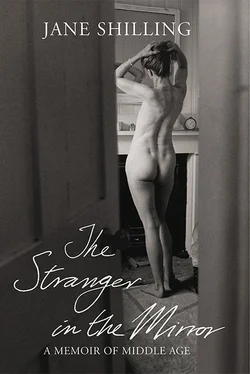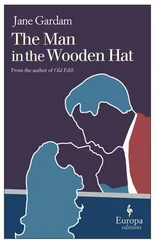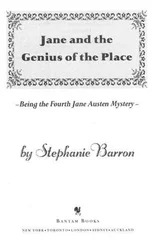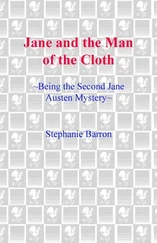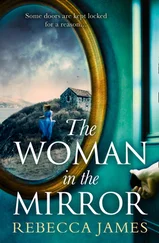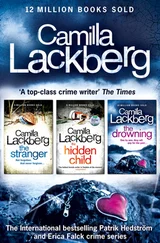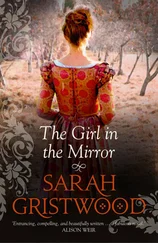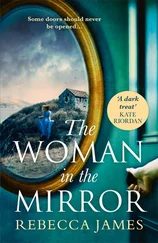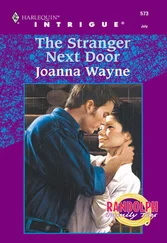The list went on and on. No tight jeans (in case of giving passers-by a nasty turn by looking like a lissom teenager from behind, and a skinny crone when they get a glimpse of your front elevation). No bare midriff. No ‘directional’ shoes: they are ‘undignified’. Nor should you ‘cling to the styles of yesteryear’ (this meant no kitten heels). What the hapless fortysomething is supposed to walk about in was not clear. But it’s a fair bet that bare feet are out of the question, as well.
When the advice was positive, rather than simply a list of forbidden fashion fruit, the results were often odd, or disturbing, or insultingly dull. In 2008 Marks & Spencer launched Portfolio, a range of clothing for ‘the older woman’ that combined hectic impracticality (a sleeveless, zip-front jumpsuit) with bizarre dowdiness (elastic-waisted jersey trousers) and a fearful coyness (a trench coat, sawn off at hip level, in sickly raspberry pink). The effect was astonishing: a horror parody of every grim cliché of middle-aged dressing.
Two years later Debenhams also had a crack at the market of what they described as ‘forgotten women’, launching ‘the Style List’, a campaign intended to show women in their forties, fifties and sixties ‘how to achieve fashionability and enjoy trends traditionally worn by consumers half their age’. The campaign seemed better considered than Marks & Spencer’s. It used models the same age as its target consumers, who actually looked their years. And the clothes were nicer. They weren’t really my thing: very urban and sophisticated, whereas my get-ups always seemed to have a vague whiff of the stableyard about them, even when I was doing my best to look soignée. But at least they avoided the dreaded cliché (the only resort, it sometimes seemed, of fashion editors faced with the task of advising the over-forties on their wardrobes) of ‘timeless classics’: cashmere cardis, crisp white shirts, the essential black trouser, the perennial trench, good shoes, good bags, a string of pearls, a bright silk scarf or funky bangle to add a jolt of colour.
I was too narrow across the shoulders to carry off tailoring, too pale to wear a crisp white shirt – and in any case the prospect of spending the next four decades of my life in expensive monochrome made me want to weep with boredom. Why would I suddenly want to start dressing like a corporate lawyer when my whole life had been dedicated to clothes that put on a performance? All I wanted to do was to carry on looking like me. Whoever that was these days.
The disjunction between the person I felt myself to be inside, and the person my clothes announced me to be was intensely disconcerting – a sort of sartorial aphasia, as disturbing as finding oneself suddenly unable to communicate in a language one had once spoken fluently. Like the old woman in the nursery rhyme who woke from a snooze by the roadside on her way home from market to find her petticoats cut up to her knees, I didn’t know who I was any more.
The rhyme describes the old woman in a state of cruel distress at what she feels is her loss of identity: ‘She began to shake,/And she began to cry,/Lawk a mercy on me,/This is none of I!’ She comforts herself with the thought that, ‘if this be I,/As I do hope it be’, her dog at home will know her. ‘If it be I,/He’ll wag his little tail,/And if it be not I/He’ll loudly bark and wail!’ But as she arrives home, ‘Up starts the little dog,/And he began to bark’. The rhyme ends with the dog barking as though at a stranger, and the little old woman in her curtailed petticoats standing outside her house in the darkness, weeping bitterly and wondering who she is, if not herself.
Without my carapace of clothes to rely on, I began to feel as I had when as a child, I used to frighten myself by repeating ‘Who am I? Who am I?’ until overtaken by a vertigo of lost identity. I could feel that change was upon me, as it had been when I had precipitated the first great row of adolescence by buying the offensive pair of shoes. Only that time, clothes had been my allies; the armour of my new-fledged sexuality: it was me and my high heels, contra mundum . Now I was on my own. I retreated into my uniform of jeans and a jumper, and grieved.
One day I bought a fashion magazine: ‘The Don’t Miss List – Vogue ’s need-to-know guide to autumn’, said the coverline. I hoped it might point me in the right direction. Inside were pictures of Kate Moss wearing trousers sewn from a Union flag; a grey chiffon top with a fringe of silver and sulphur yellow beads. In a derelict room with shattered floorboards and walls of ruined azure she stood between a chipped metal chair and an electric kettle, wearing a ballgown of pleated platinum satin; a short dress of white ostrich feathers and another of white organza roses with a studded black leather motorcycle jacket; a ruffled rag of rose and peach-coloured chiffon beneath a frogged military jacket.
In a bodice of guipure lace flowers and a Union flag jacket she gazed without expression at the camera. Her bare feet were thrust into unzipped black boots with heavy wooden platforms, and she held a tulle crinoline above her waist so that her little black mesh pants were exposed. ‘Knickers, Kate’s own’, said the caption.
A paragraph of text explained the purpose behind the apparently random juxtapositions of silk fringing and metal chain; embroidered tulle with goat-hair and horsehair, studded leather and old metal badges. ‘Who wants to look like a fashion robot when the joy is adding the you, the me?’ it enquired: ‘From amulet-dripping necklaces to haute-bohemian rope belts, and from lace handbags to metallic stilettos, choose your self-expression.’
I was easily persuaded to comply with this sort of rhetorical exhortation. Choosing my self-expression was exactly what I longed to do. Shimmering at the edge of my consciousness was a notion of the sort of clothes I wanted. I owned a book of photographs of Balenciaga’s designs from the 1950s and ’60s. That lovely sculptural rigour was it exactly. Not sexy or girlish but strange, organic shapes like birds’ wings, trees, or rock forms carved by wind and waves, in fabrics nubbly, sleek, slashed, hairy or granulated with beads and sequins.
I didn’t care for the late-period sable jogging pants, but coveted a great, stiff, moundlike cloak of green tufted wool, like wearing a small grassy hillock as an outer garment. These were clothes for women with lived lives; intelligent, complicated clothes in which one might resemble a mythical beast – a selkie, say, half seal, half woman – or an animated feature of landscape. In clothes like those, one would look interesting at any age.
Such garments were still to be had – made by Galliano, McQueen, Lanvin or Hussein Chalayan and glimpsed from time to time in red-carpet photographs, generally with Tilda Swinton inside them. They weren’t the stuff of high-street knockoffs, however: too clever and wrought to be reduced to something that could be run up in a Far Eastern sweatshop. These were clothes that you could only own if you had a very great deal of money, and I hadn’t any, so that was a problem. I couldn’t afford even the tamed, domestic versions of these daring, feral garments – the less alarming but still thoughtful mid-price creations of Donna Karan, Nicole Farhi, Sonia Rykiel or Agnés B.
I thought of humble, middle-aged Miss Matty in Cranford , standing among the newly arrived Spring Fashions in Johnson’s, the Cranford shop that sold everything from cheese to millinery, fingering the rainbow shawls and lustrous silks of crimson, sage green, silvery grey and lilac with yellow spots and wishing like a girl that she might have a gown for every season. I thought of Clarissa Dalloway, stitching and stitching at the tear in her green silk evening dress, planning her party, deep in reverie, her mind turning at anchor between the girl she was and the woman she had become.
Читать дальше
